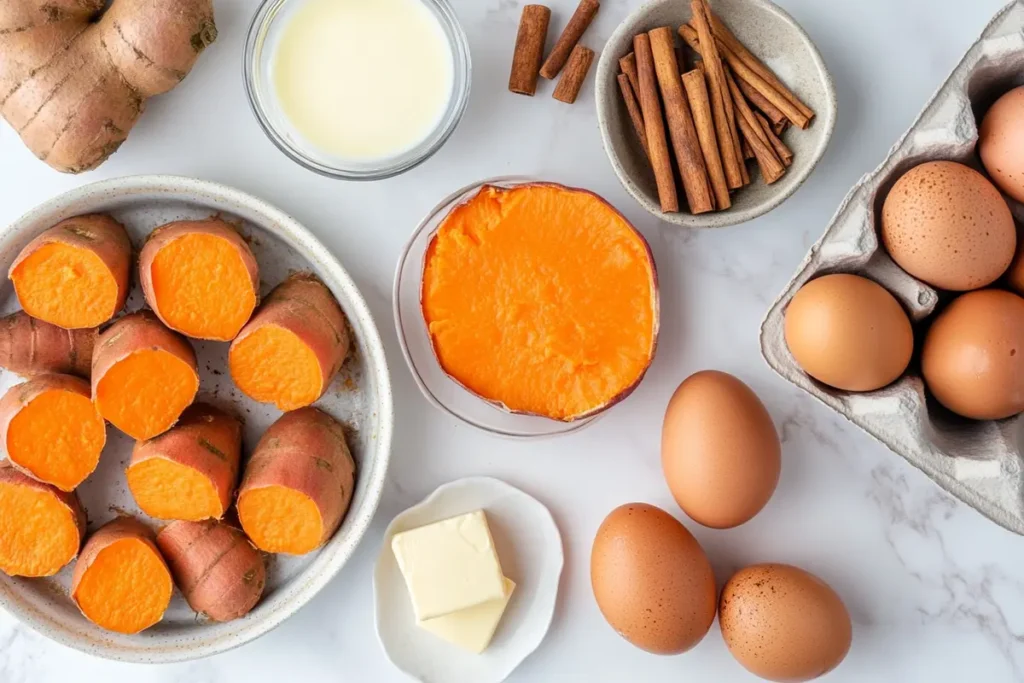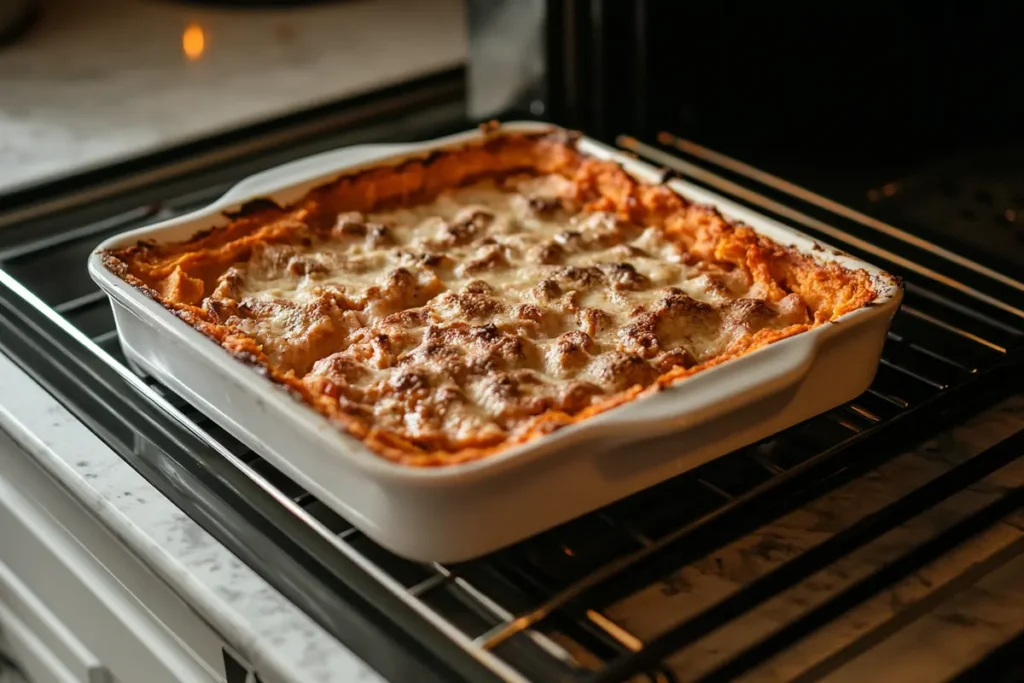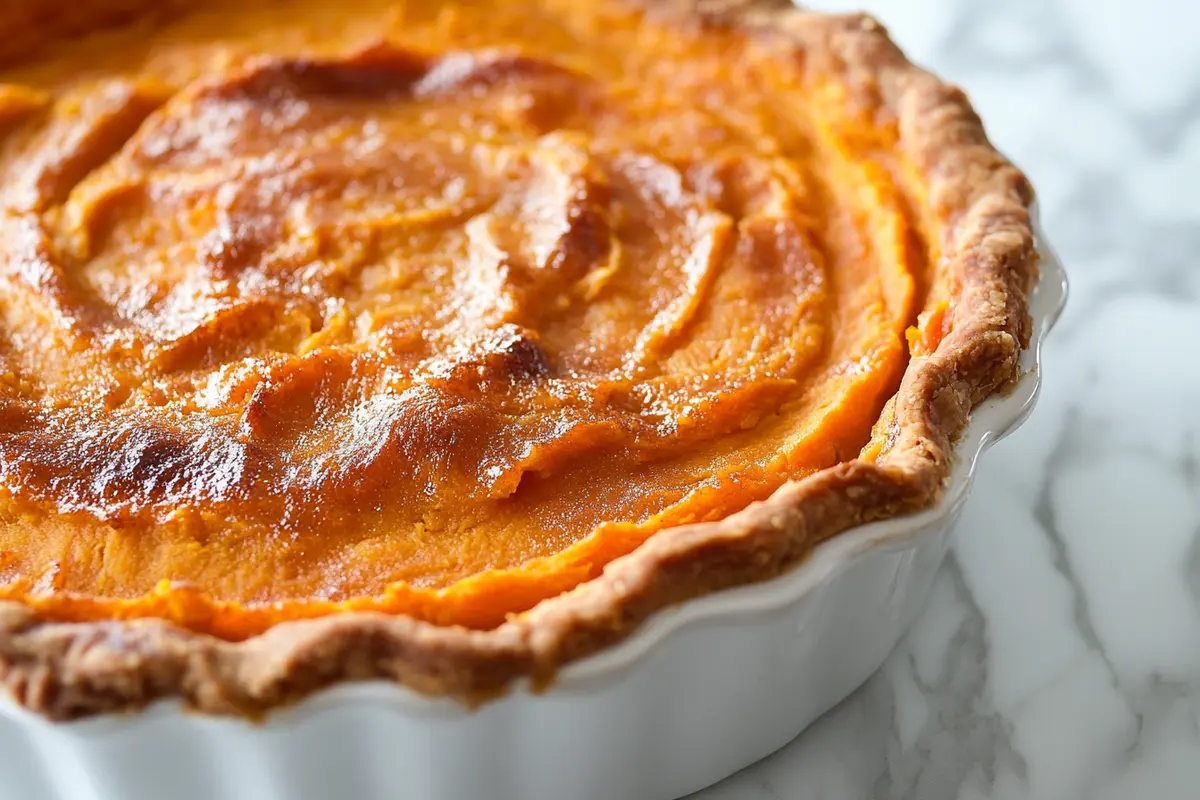This article explores the naturally delicious world of old fashioned sweet potato casserole, offering a traditional recipe and helpful tips.
A Naturally Classic Comfort: Old Fashioned Sweet Potato Casserole
Sweet potato casserole holds a special place on many tables, especially during holidays. Its creamy texture and sweet, naturally appealing flavors create a dish that everyone loves. This recipe focuses on the classic, old fashioned approach, bringing out the best in simple ingredients. Therefore, you’ll discover how to make a side dish that is both comforting and truly delicious. Furthermore, the ease of preparation makes it a go-to for busy cooks who want a guaranteed crowd-pleaser. The beauty of this recipe lies in its simplicity, allowing the naturally good flavors of the sweet potatoes to shine through.
Understanding the Naturally Key Ingredients
The success of any great casserole lies in the quality of its ingredients. Therefore, let’s explore each component. First, of course, we have sweet potatoes. They are naturally sweet and nutritious. They provide a creamy base for this dish. Next, butter adds richness. Sugar brings out the sweet potato’s flavors. Eggs help bind the casserole together. Milk creates the perfect smooth consistency. Finally, spices like cinnamon and nutmeg add warmth and depth. Moreover, each of these ingredients plays a crucial role in creating the final, naturally balanced flavor profile of the casserole. Using quality ingredients is paramount for the best taste.
The Sweet Potato Star
Sweet potatoes are, naturally, the star of this casserole. Choose firm sweet potatoes that are free from blemishes. Furthermore, they should feel heavy for their size. This indicates good quality and high moisture content. There are different ways to prepare them. You can boil them, bake them, or even microwave them. However, baking is often preferred for the most concentrated flavor. Additionally, baking also helps in keeping the moisture inside the sweet potatoes, making them soft. The roasting process intensifies their naturally sweet essence, creating a more flavorful base for the casserole.
Eggs and Binding
Eggs are a vital part of this recipe. They serve as a binding agent. This helps the casserole hold its shape. Additionally, eggs add richness and a slightly custardy texture. Therefore, it’s important to use the right amount for the best results. Moreover, make sure your eggs are fresh. Using fresh eggs can also help to achieve a lighter texture, rather than a dense or heavy casserole. The eggs contribute to the overall consistency and create a naturally smooth texture throughout the dish.
Sweeteners and Spices
Sugar enhances the naturally sweet flavor of the potatoes. You can use brown or white sugar, or a combination of both. However, brown sugar adds a slightly molasses-like flavor. Spices like cinnamon and nutmeg add warm notes. These flavors blend wonderfully with the sweet potatoes. Additionally, a pinch of salt balances the sweetness. The salt is key to preventing the casserole from becoming overwhelmingly sweet, and it enhances the other flavors, making it naturally delicious.
Step-by-Step Guide to a Naturally Old Fashioned Sweet Potato Casserole Casserole

Now, let’s delve into the method for making the casserole. This classic recipe is easy to follow. Therefore, you’ll be able to enjoy this dish in no time. This step-by-step guide ensures that even novice bakers can create this naturally wonderful dish with ease.
Preparing the Sweet Potatoes
First, preheat your oven to 350°F (175°C). Next, wash the sweet potatoes well. Puncture them with a fork. This allows steam to escape. Bake them until they are tender. Usually, this takes about 45 to 60 minutes. However, the exact time depends on their size. Allow them to cool slightly. Then, scoop the flesh out of the skins. Furthermore, if you prefer, you can peel the potatoes before baking, but baking with the skin on can help to retain moisture. Cooling them slightly prevents burning when scooping out the flesh, keeping the process naturally safe.
Mixing the Naturally Delicious Ingredients
In a large bowl, mash the cooked sweet potatoes. You can use a potato masher or a fork. Next, add the melted butter. Then, add the sugar. Mix well. In a separate bowl, whisk the eggs. Then add the milk. Next, pour the egg mixture into the sweet potato mixture. Add the spices and salt. Mix everything until it is well combined. Moreover, make sure not to overmix, as this can result in a denser texture. A gentle mixing is key to achieving a light and fluffy casserole, blending all flavors naturally together.
Assembling and Baking Old Fashioned Sweet Potato Casserole

Pour the mixture into a greased baking dish. A 9×13 inch dish works well. For a topping, you can use chopped pecans or a crumble topping. However, the traditional recipe doesn’t always have a topping. Bake the casserole for about 30 to 40 minutes. It’s ready when the top is golden brown. Furthermore, a knife inserted in the center will come out clean. Moreover, check the casserole’s temperature to ensure it is heated through. Allow it to cool slightly before serving for an even more naturally perfect presentation.
Variations and Customizations for Your Naturally Sweet potato Casserole
While the traditional recipe is wonderful, there are some variations you might enjoy. These adjustments can help you personalize the dish. Therefore, you can explore these variations to find your favorite version. Each variation offers a slightly different twist, making this naturally versatile recipe even more adaptable.
Naturally Enhancing Flavors
You can add a touch of vanilla extract to the sweet potato mixture. Additionally, a little maple syrup can replace some of the sugar. These additions elevate the flavor profile. Furthermore, you might want to experiment with other spices. For example, a hint of ginger or cloves can add depth. Adding a pinch of allspice or cardamom can also give your casserole a unique flavor profile. Each spice will contribute to a different experience, making it naturally customizable.
Topping Options
A classic topping includes chopped pecans or walnuts. Furthermore, a crumble topping adds texture and sweetness. You can make a crumble using flour, brown sugar, and butter. Simply mix it together until it resembles coarse crumbs. Another option is to use mini marshmallows. This creates a sweet and gooey topping. For a crunchier topping, consider adding some oats to your crumble. Experimenting with different toppings allows you to create a naturally satisfying textural contrast.
Naturally Healthier Alternatives of Old Fashioned Sweet Potato Casserole
If you want to make a lighter casserole, you can make some substitutions. Instead of butter, use a small amount of applesauce. Furthermore, you can use a sugar substitute in place of some of the sugar. Therefore, you can reduce the amount of sweeteners used. Moreover, using skim or almond milk will lower the calories. You can also use mashed banana to enhance the sweetness and decrease the sugar. These healthier alternatives allow you to enjoy the naturally delicious taste while keeping your health goals in mind.
Naturally Gluten-Free Options
For a gluten-free version, make sure to avoid using any wheat-based ingredients. Ensure that your spices are gluten-free as well. There are many gluten-free baking options available. For example, you can use almond flour to create a gluten-free crumble topping. Another option is to use a blend of gluten-free oats and nuts for the crumble. This ensures that everyone can enjoy this naturally delightful dish.
The History of Sweet Potato Casserole
Sweet potato casserole’s roots are in the Southern United States. It evolved from simple, naturally sweet potato dishes into the more elaborate version we know today. It became a popular dish during the mid-20th century. The rise of canned goods allowed people to enjoy sweet potatoes more easily. The additions of marshmallows or pecans came later. These variations are now staples in many households, further enhancing its naturally sweet appeal. It’s a dish that reflects both regional traditions and evolving culinary trends.
Serving and Enjoying Your Naturally Sweet Potato Casserole
Once your casserole is baked, it is ready to be served. Therefore, let’s look at how to enjoy this wonderful dish. The aroma alone is enough to signal a special occasion. The warm and comforting taste is sure to delight everyone at your table.
Best Serving Suggestions
Sweet potato casserole is a versatile side dish. Therefore, it goes well with many different meals. It is most commonly served during holiday dinners. However, you can enjoy it anytime. It makes a great side dish for roast chicken or ham. Additionally, it also pairs well with turkey. It’s delicious served warm right out of the oven. In addition to pairing well with savory meats, it is also an excellent complement to vegetarian entrees. Furthermore, a small dollop of whipped cream can enhance the naturally delicious experience.
Storing Leftovers
Leftover sweet potato casserole can be stored in the refrigerator. Keep it in an airtight container. It will stay fresh for about 3 to 4 days. You can also freeze it. Wrap it well in plastic wrap and then foil. It will last for up to 3 months in the freezer. Simply thaw in the refrigerator overnight. Then, reheat in the oven. Proper storage is key to retaining the casserole’s naturally good taste and texture.
Reheating Instructions
To reheat the casserole, preheat your oven to 350°F (175°C). Place the casserole in an oven-safe dish. Add a splash of milk or water. This will help keep it moist. Cover with foil. Bake for about 15 to 20 minutes, or until heated through. You can also reheat single servings in the microwave. When reheating, ensure that the dish reaches an internal temperature of at least 165°F (74°C) to ensure food safety. This will bring back the naturally perfect flavors of the casserole.
Tips for the Best Sweet Potato Casserole
Creating the best sweet potato casserole comes down to a few key tips. Therefore, keeping these in mind will help you achieve consistently great results. These guidelines will further enhance your baking expertise.
Choose the Right Sweet Potatoes
Selecting high-quality sweet potatoes is the first step. Look for firm sweet potatoes that are free of soft spots or blemishes. Their color should be consistent, and they should be firm to the touch. Using good quality sweet potatoes is naturally important for a great taste and texture.
Don’t Overmix
When combining the ingredients, mix gently. Overmixing can result in a dense and tough casserole. Moreover, a light and airy texture comes from handling the batter with care. Gentle folding is key to maintaining its naturally delicate consistency.
Experiment with Spices
Don’t be afraid to experiment with different spices to find your favorite flavor combination. In addition to cinnamon and nutmeg, consider adding a touch of cardamom or ginger for a slightly different twist. This will make your casserole taste naturally unique and enjoyable.
Proper Baking Time
Bake the casserole until it’s heated through and golden brown. The internal temperature should reach 165°F (74°C). Baking times can vary slightly, so monitor your casserole during baking and adjust time as needed. The naturally perfect baking time will result in a perfectly cooked casserole.
The Naturally Timeless Appeal of Sweet Potato Casserole
Sweet potato casserole has been a favorite for generations. Its appeal lies in its simple flavors. Additionally, it is the warm, comforting feeling it brings. Therefore, it is a dish that many families look forward to each year. It’s a naturally perfect side dish for any occasion. The enduring nature of this recipe speaks to the human desire for comfort food and tradition.
A Family Favorite
This dish is often passed down through families. Each family may have its own twist on the recipe. It’s a great dish to prepare with loved ones. Therefore, it helps build lasting memories. The aroma of the casserole baking fills the home with warmth. This makes it a perfect dish for bringing people together. Preparing this dish together is a beautiful way to bond and create naturally wonderful memories.
Naturally Festive and Versatile
This casserole is not just for holidays. It can be enjoyed year-round. It’s a great choice for potlucks and gatherings. Furthermore, it is also a perfect dish for cozy weeknight meals. Therefore, this dish is truly versatile. Its naturally sweet flavor is suitable for any occasion. It is a reliable choice for a side dish that will always be well-received.
Celebrating Simplicity
The best part of this recipe is its simplicity. It uses basic ingredients. They combine to create something truly special. It is a dish that doesn’t need fancy techniques. Moreover, it is all about letting the natural flavors shine. This is why it has remained a favorite for so long. The naturally good flavors are what make this recipe truly special and time-tested.
Frequently Asked Questions about Old Fashioned Sweet Potato Casserole
What are the ingredients in Savannah Classics sweet potato casserole?
The naturally classic sweet potato casserole includes sweet potatoes, butter, sugar, eggs, milk, cinnamon, and nutmeg. Moreover, some might add vanilla or a crumble topping.
Why put eggs in sweet potato casserole?
Eggs act as a binding agent. Furthermore, they give the casserole a slightly custardy texture. Therefore, they help it hold its shape.
Is it better to boil or bake sweet potatoes for a casserole?
Baking sweet potatoes is often preferred. It brings out a more concentrated flavor. Additionally, it reduces the moisture content. However, both methods work fine. It depends on your taste naturally.
Why do you soak sweet potatoes before baking?
You do not need to soak sweet potatoes before baking. You will puncture the skin with a fork for steam to escape. Then you bake until they are soft, the result is a naturally softer potato.
Conclusion
In conclusion, creating a naturally delicious old fashioned sweet potato casserole is a rewarding experience. This classic sweet potato bake, with its simple ingredients and comforting flavors, is perfect for any occasion. Whether you’re making it for a holiday gathering or a simple weeknight meal, this traditional sweet potato dish is sure to please. By following our guide, you can easily prepare this naturally satisfying side, making it a staple in your recipe repertoire for years to come.

